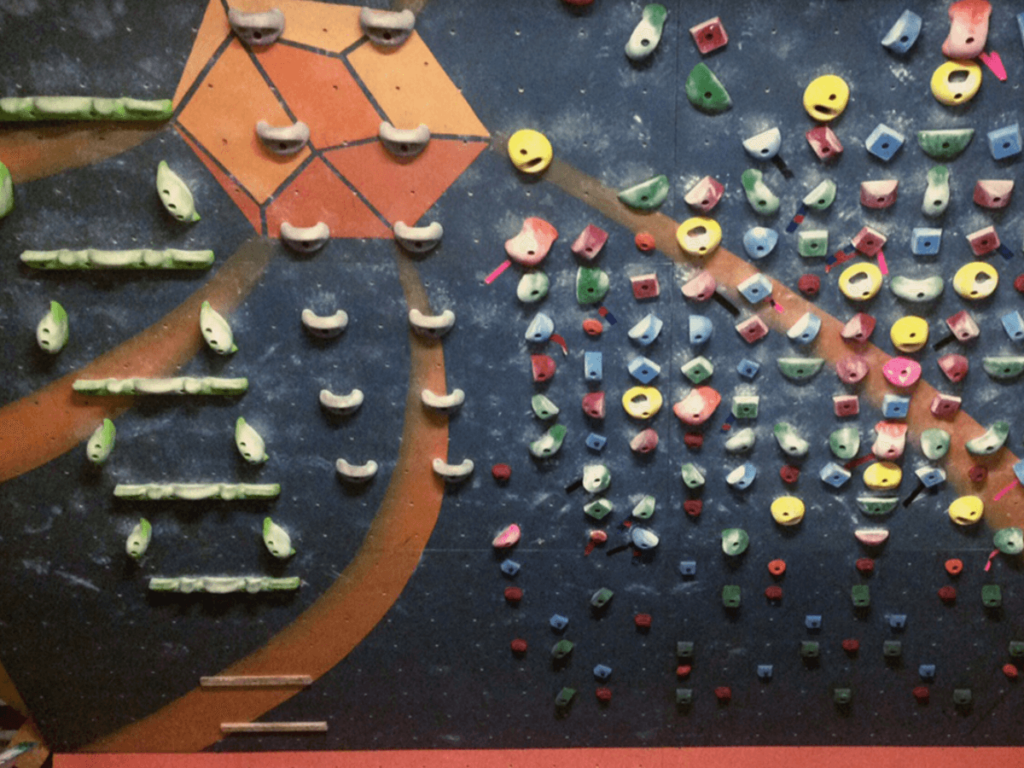As new climbing gyms open up or older ones receive upgrades, the thing you are bound to find now more than ever before are climbing boards. Some people may refer to them as training boards or simply by the name of the brand that makes them. In that case, you may already be familiar with Kilter Board and Moonboard, two of the more popular models in commercial climbing gyms.
Both are similar in function, with a few variations and corresponding apps allowing climbers to look at climbs on their phone and “send” them to the board where different colored LED lights denote start, finish, and hand/foot holds.
But, if the interface is highly similar, why do both exist, and which should you use? In short, both exist because the Moon Board was the first light-up training board, and another company created their upgraded variation, which is now the Kilter Board. And, if you have access to either, we highly suggest hopping on and giving it a go as regularly as possible.
Moonboard vs Kilter Board

Moonboard
We’ll kick it off with the OG LED training board created by Ben Moon in 2005. There are two set angles the Moonboard can come in, 25 or 40 degrees. Each hold has an LED light below it to indicate whether it is the start hold, finish hold, or just a hold on the route. Historically, the Moonboard is tagged as stiffer among climbers, meaning each climb is more challenging for the grade. Most say this is because the holds and placement lend to climbers creating outdoor-style boulders, which are usually stiffer and more powerful than commercial gym sets. In other words, there are no jugs among the standard Moonboard holds, and the lowest grade you’ll see on the app is V3 (and there are only a few).
Considering the fixed overhung angle of a Moonboard, the hold selection, and the style of climbs typically set, the Moonboard is an excellent tool for climbers comfortable climbing V3/V4 in the gym and looking to challenge themselves. And climbers who regularly send the harder boulders in the gym can significantly benefit from the selection of climbs, whether the goal is to climb as hard as possible or train for outdoor climbs.
Kilterboard
The Kilter Board is one of the newer training boards on the market with some unique features that make it more user-friendly and versatile than the Kilter Board. For example, a Kilter Board can sit at 5-degree angles between 0 degrees (vertical) and 70 degrees (extremely overhung). There are also different widths the board can come in based on space availability. Hold sets contain a variety of hand holds such as jugs, crimps, slopes, pinches, and foot jibs, and each hold has an LED light ring around it, making it incredibly easy to see what holds are on/off while climbing.
The various angles holds and encircling LED light system ensure that climbs of all difficulties start at V0 and work up the V-scale. The app is well-developed to include a filter that adjusts for the angle at which you set your Kilter Board, showing the appropriate climbs as options. A Kilter Board’s hold variety also lends itself toward gym-style sets, making it great for climbers looking to get strong and improve their climbing without training for outdoor projects.
Overall, the Moonboard is a training tool geared toward intermediate and advanced climbers and climbers who use a climbing gym to train for outdoor climbing. Meanwhile, the Kilter Board is more versatile, offering beginner-friendly, intermediate, and advanced variations and modifications. The climbs set on the board are also more conducive to training for indoor climbing and gym setting. Hopefully, the breakdown of each board has helped highlight the pros and limitations of each board and ultimately inform your decision of which is best for you! If there are any outstanding questions, comments, or concerns about anything brought up or that you think of after reading, let us know in the comments below!

